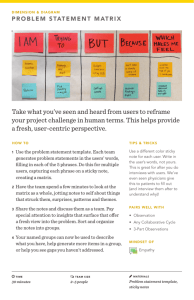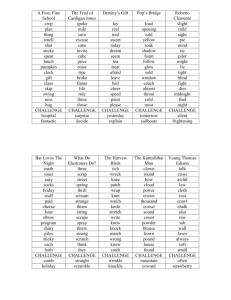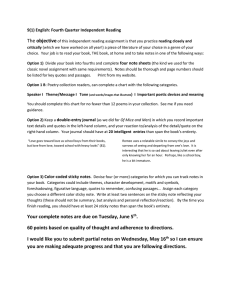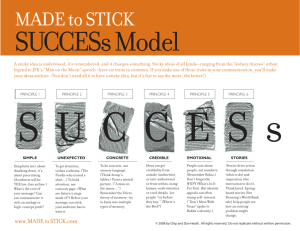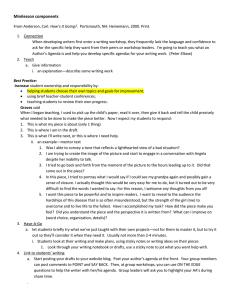1 Explanation of exercise methods APPENDIX
advertisement
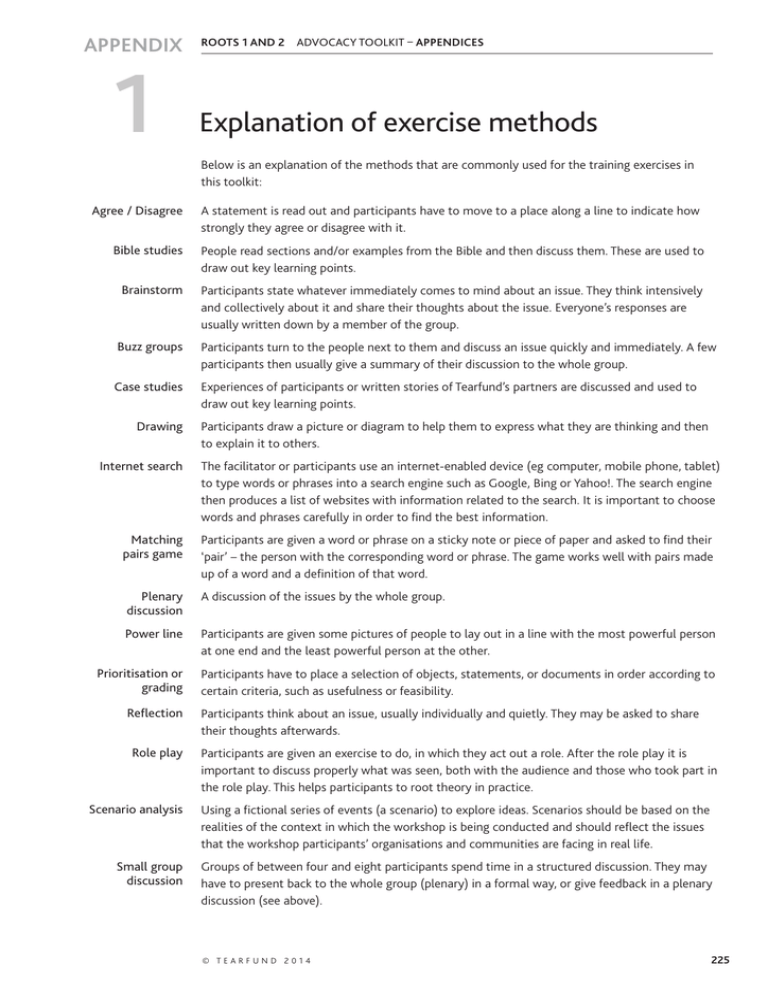
APPENDIX 1 ROOTS 1 AND 2 ADVOCACY TOOLKIT – APPENDICES Explanation of exercise methods Below is an explanation of the methods that are commonly used for the training exercises in this toolkit: Agree / Disagree A statement is read out and participants have to move to a place along a line to indicate how strongly they agree or disagree with it. Bible studies People read sections and/or examples from the Bible and then discuss them. These are used to draw out key learning points. Brainstorm Participants state whatever immediately comes to mind about an issue. They think intensively and collectively about it and share their thoughts about the issue. Everyone’s responses are usually written down by a member of the group. Buzz groups Participants turn to the people next to them and discuss an issue quickly and immediately. A few participants then usually give a summary of their discussion to the whole group. Case studies Experiences of participants or written stories of Tearfund’s partners are discussed and used to draw out key learning points. Drawing Internet search Participants draw a picture or diagram to help them to express what they are thinking and then to explain it to others. The facilitator or participants use an internet-enabled device (eg computer, mobile phone, tablet) to type words or phrases into a search engine such as Google, Bing or Yahoo!. The search engine then produces a list of websites with information related to the search. It is important to choose words and phrases carefully in order to find the best information. Matching pairs game Participants are given a word or phrase on a sticky note or piece of paper and asked to find their ‘pair’ – the person with the corresponding word or phrase. The game works well with pairs made up of a word and a definition of that word. Plenary discussion A discussion of the issues by the whole group. Power line Participants are given some pictures of people to lay out in a line with the most powerful person at one end and the least powerful person at the other. Prioritisation or grading Participants have to place a selection of objects, statements, or documents in order according to certain criteria, such as usefulness or feasibility. Reflection Role play Participants think about an issue, usually individually and quietly. They may be asked to share their thoughts afterwards. Participants are given an exercise to do, in which they act out a role. After the role play it is important to discuss properly what was seen, both with the audience and those who took part in the role play. This helps participants to root theory in practice. Scenario analysis Using a fictional series of events (a scenario) to explore ideas. Scenarios should be based on the realities of the context in which the workshop is being conducted and should reflect the issues that the workshop participants’ organisations and communities are facing in real life. Small group discussion Groups of between four and eight participants spend time in a structured discussion. They may have to present back to the whole group (plenary) in a formal way, or give feedback in a plenary discussion (see above). © TEARFUND 2014 225 APPENDICES Sticky notes or blank cards ROOTS 1 AND 2 ADVOCACY TOOLKIT – APPENDIX 1: EXPLANATION OF EXERCISE METHODS Participants use them to write down words or phrases quickly. They are usually then stuck on the wall, a piece of paper or a flipchart, or placed on the floor for further discussion. This method ensures that everyone participates and helps people express their own reactions to issues. The following methods are not specified in the exercises, but may be used in addition: Dots Gallery walk Small sticky dots are used by participants to vote for their preferred option. For example, pieces of paper with different definitions written on them are placed on the wall. Participants stick the dots on the cards that they agree with or prefer. This method ensures that everyone participates and makes decisions themselves. Pieces of work are placed on the wall for all participants to see. Participants ask questions to those who wrote or drew them. Equipment A checklist of suggested materials needed for the Exercises in this toolkit: 226 ■ Biros ■ Blank cards (useful when sticky notes are not available) ■ Flipchart stand with flipchart paper ■ Flipchart pens in different colours ■ Glue ■ Paper ■ Pins ■ Poster tack (such as Blu-Tack) ■ Sticky notes ■ Sticky tape ■ String and pegs TEARFUND ROOTS RESOURCES
